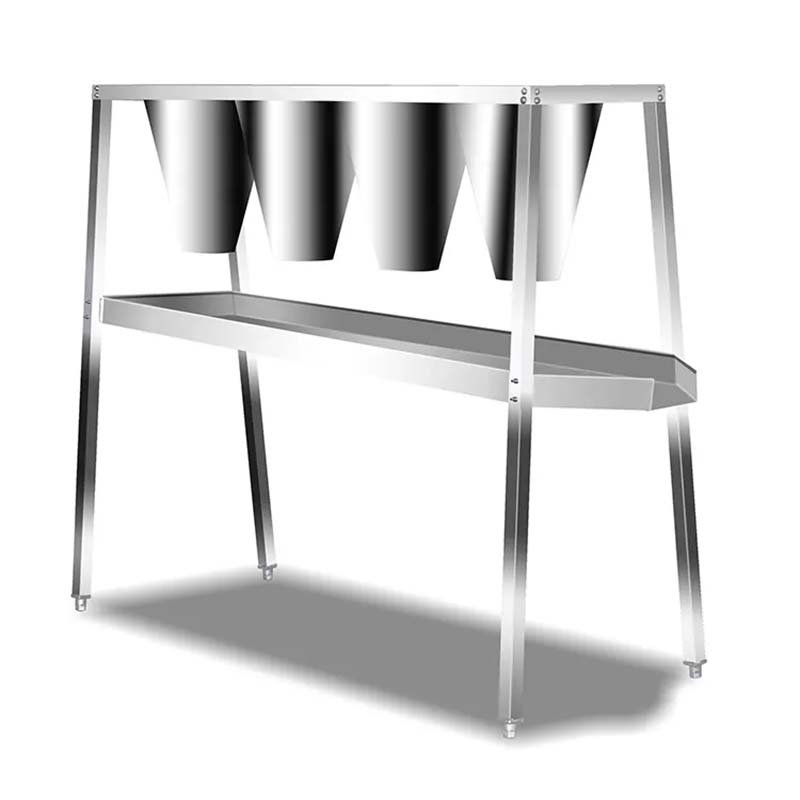fish feed grinding machine
ធ្នូ . 10, 2024 10:04 Back to list
fish feed grinding machine
The Importance of Fish Feed Grinding Machines in Aquaculture
Aquaculture, the farming of fish and other aquatic organisms, has become a vital source of food and livelihood for millions around the globe. As the demand for fish protein increases, so does the necessity for efficient and effective fish feed production. One key component in the production of high-quality fish feed is the use of fish feed grinding machines. These machines play a crucial role in processing raw ingredients into nutritious feed that supports the healthy growth of fish.
Understanding Fish Feed Grinding Machines
Fish feed grinding machines are specialized equipment designed to pulverize various ingredients used in aquaculture feed production. These machines typically operate by using blades or hammers to break down the raw material into finer particles, ensuring uniformity in texture and consistency. This uniformity is essential, as it facilitates better digestion and nutrient absorption by the fish.
By grinding feed ingredients into specific particle sizes, these machines not only enhance the palatability of the feed but also reduce waste, improving feed conversion ratios. The overall efficiency of fish farming operations is significantly increased when high-quality feed is utilized, leading to healthier fish and higher yields.
Benefits of Using Fish Feed Grinding Machines
1. Quality Control One of the foremost advantages of using grinding machines in fish feed production is the ability to maintain high-quality standards. A well-ground feed ensures that all nutrients are evenly distributed and accessible to the fish, promoting optimal growth and health.
2. Customization With advancements in technology, modern fish feed grinding machines allow for customization of particle sizes to suit different species of fish. Each species has its own dietary requirements, and being able to produce tailored feed can significantly impact the success of aquaculture operations.
fish feed grinding machine

3. Cost Efficiency By maximizing the use of raw materials and minimizing waste through uniform grinding, aquaculture farmers can reduce operational costs. High-quality ground feed means fish reach market size more quickly, which can lead to improved profitability.
4. Increased Feed Shelf Life Grinding machines help create feed that has a longer shelf life. Properly ground feed can be stored for extended periods without losing its nutritional value, ensuring that fish farmers have a reliable supply of feed.
5. Environmental Sustainability Efficient feed production plays a significant role in reducing the environmental impacts associated with aquaculture. Quality feed leads to higher feed efficiency and lower waste production, which can protect water quality and promote sustainable farming practices.
Choosing the Right Fish Feed Grinding Machine
When selecting a fish feed grinding machine, several factors should be considered. The size and scale of the aquaculture operation will dictate the capacity of the machine required. Additionally, farmers should evaluate the specific types of ingredients they will be grinding, as certain machines are better suited for specific materials.
Another important consideration is the ease of operation and maintenance. Machines that are user-friendly and easy to clean will help keep downtime to a minimum and ensure consistent production. Furthermore, energy efficiency is crucial; grinding machines that consume less power can lead to significant cost savings over time.
Conclusion
In conclusion, fish feed grinding machines are an essential tool in the aquaculture industry. They not only enhance the quality and efficiency of fish feed production but also contribute to the overall sustainability of fish farming practices. By understanding the benefits and selecting the right equipment, fish farmers can significantly improve their productivity and profitability. As the global demand for fish continues to rise, investing in high-quality feed production equipment will be paramount for successful and sustainable aquaculture operations. The role of technology in aquaculture, particularly in feed processing, cannot be overstated; it is a cornerstone for the future of fish farming.
-
High Performance Exhaust Fan – Efficient Ventilation Solutions for Home
NewsJun.10,2025
-
High-Quality Gestation Pen for Sows Durable Mobile Pig Pen & Simple Pig Pen Solutions
NewsJun.10,2025
-
High Quality Rabbit Cage Double Tier Designs & Welded Wire Mesh Supplier
NewsJun.10,2025
-
Floating Fish Feed Machine - High Efficiency Floating Fish Feed Extruder for Small Scale Production
NewsJun.10,2025
-
Premium Poultry Housing Solutions Mobile & Commercial Free Range Options
NewsJun.10,2025
-
Industrial FRP Fans Corrosion-Resistant Blades & Centrifugal Systems
NewsJun.09,2025






